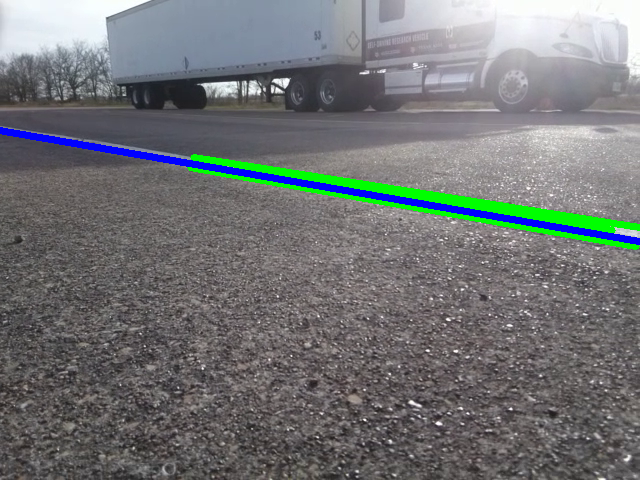Low-cost Navigation using Computer Vision

The North Texas Tollway Authority is an organization that runs and maintains toll roads and road infrastructure in the North Texas Area. They are responsible for collecting tolls and to use those tolls to fund projects and services connected to the infrastructure and use of these toll roads. This includes servicing the roadway itself, mobile repairs or service, and the monitoring of roads for safety and traffic conditions. This allows the NTTA to respond and adapt to changing conditions throughout the day and to better serve those who use their roads.
Included in the monitoring of roads, the NTTA will freely respond to accidents or break- downs on the road. In addition to road work, this means NTTA needs to have the ability to access and safely cordon portions of the road to work or provide assistance to drivers.
In order to achieve this need, NTTA has two attenuator trucks that are capable of withstanding a rear or side impact that are used to protect road workers while they are servicing the road or assisting drivers while not constricting access to the road itself. Additionally, there are numerous response trucks that are used in service but that also can also be used to block off a lane from the rear. Shown in Figure 1, the service truck in addition to the attenuator truck can be used to block off the entire shoulder and one lane while still allowing access to work within the lane.
These attenuator trucks and service trucks are vital to the safety of the NTTA workers due to the unpredictability of drivers at all times of day. However, there have been issues with the number of vehicles that have collided with these trucks. Despite working as designed to protect the workers, the attenuator trucks have long downtimes after collision and a high cost to repair. At times, both trucks have been out of service, preventing the workers from being able to safely service the road or aid drivers. And while the response trucks can also be used to block traffic and protect workers, collisions with these trucks have the same issue of large costs for repairs.
NTTA has found that placing cones in a wedge shape in front of the vehicles drastically reduces the number of collisions with the trucks by giving drivers additional warning that they are approaching road work. This is especially effective around corners and roads with high speed limits. The tradeoff is the placement of cones requires the workers to manually drop off and pick up the cones up to 120 feet away from the protection of the service and attenuator trucks. Due to the high risk of personal injury to workers, this was deemed unacceptable. Therefore, the NTTA desired a device that would be able to solve this problem. Report.